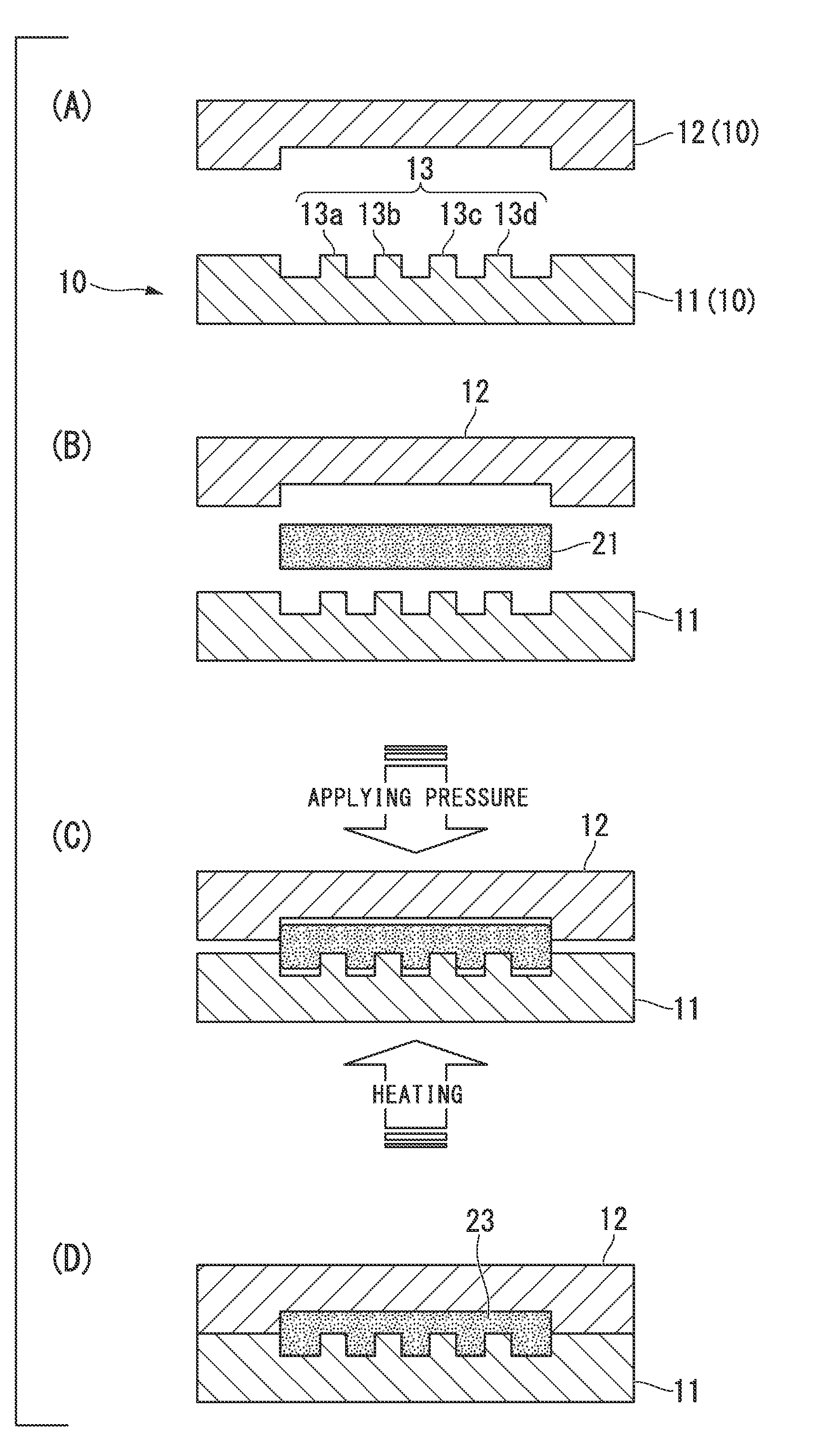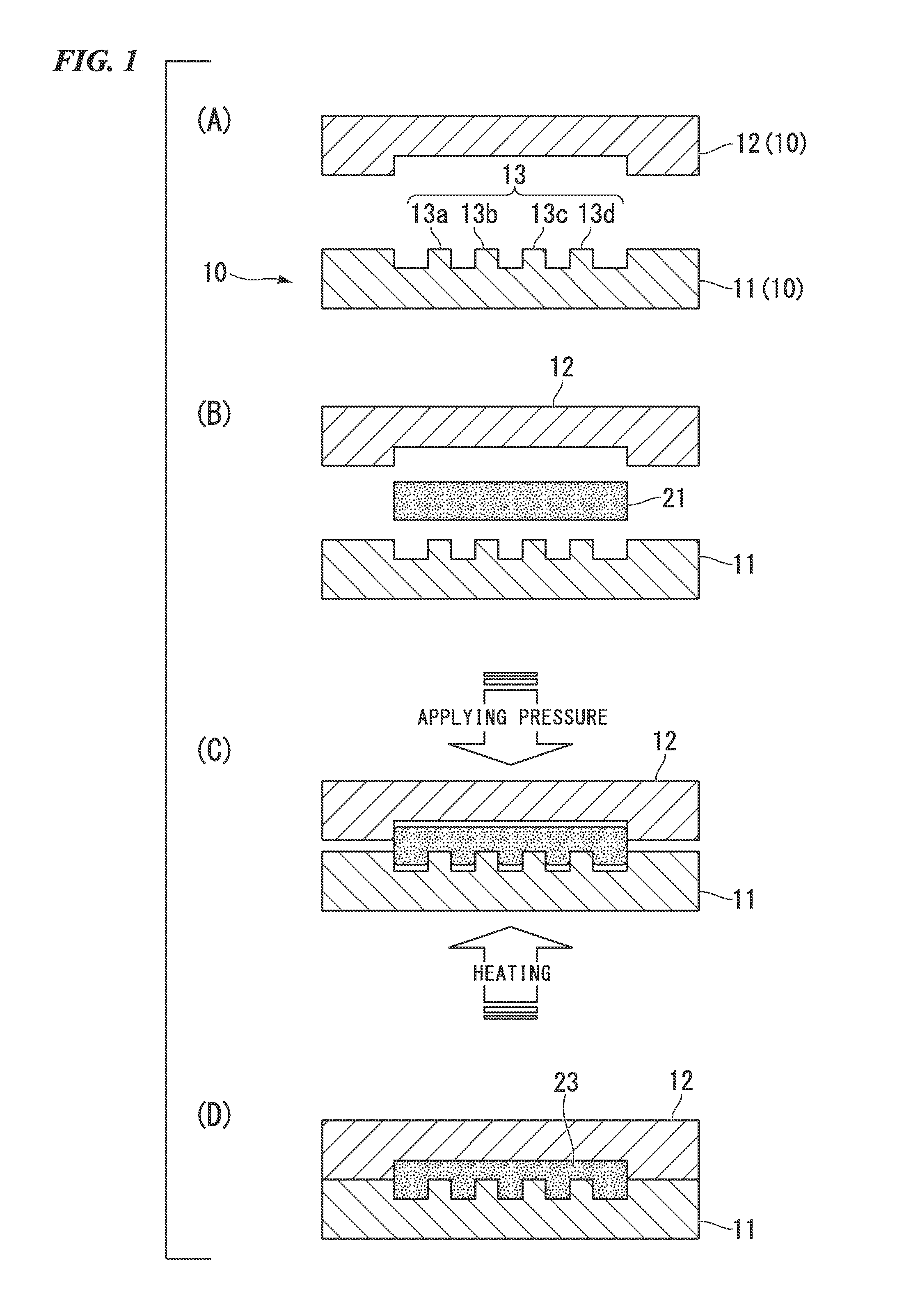Sheet press molding method and method of producing fuel cell separator
a technology of fuel cell separator and molding method, which is applied in the direction of sustainable manufacturing/processing, final product manufacturing, electrochemical generators, etc., can solve the problems of poor sheet molding ability, large thickness deviation of molded articles, poor molding ability of sheet materials, etc., to reduce the difference in the amount of compression deformation of sheet materials, reduce the difference in the amount of compression deformation, the effect of small thickness deviation
- Summary
- Abstract
- Description
- Claims
- Application Information
AI Technical Summary
Benefits of technology
Problems solved by technology
Method used
Image
Examples
example 1
[0163]A fuel cell separator of Example 1 as a molded article was produced by using the sheet press molding method of the present invention, using a sheet material containing a carbonaceous material as filler.
[0164]In other words, on the surface of the sheet material described below, a recessed portion was formed, as shown below (sheet-forming process); and then after the recessed portion of the sheet material was faced to the recess-projection pattern of the die shown below, under the following conditions of pressing process, the fuel cell separator 35, shown in FIG. 3, having the passage pattern 31 on one side which was transferred from the recess-projection pattern by applying pressure to the die, was obtained (pressing process). Further, in the pressing process, the recessed portion was placed to face the recess-projection pattern of the die by placing the edge of the recessed portion to the outer than the outermost projections among the recess-projection pattern of the die.
[0165...
example 2
[0196]A fuel cell separator of Example 2 was formed in the same manner as in Example 1, except that the recessed portion was formed by laminating a first sheet and a second sheet, wherein a portion of the first sheet corresponding to the recessed portion of the sheet material was eliminated through the first sheet, and the second sheet contained the same material as the first sheet.
[0197]As the first sheet, the sheet in which thickness was 0.32 mm and density was 1.6 g / cm3 was used. As the second sheet, the sheet in which thickness was 0.91 mm, density was 1.5 g / cm3 was used.
[0198]In addition, density of the fuel cell separator of Example 2 was 1.8 g / cm3.
[0199]The thickness deviation of the fuel cell separator obtained in Example 2 was evaluated in the same manner as in Example 1. The results were shown in FIG. 4(B) and Table 2. FIG. 4(B) is a graph showing the evaluation results of thickness deviation of the fuel cell separator of Example 2.
PUM
| Property | Measurement | Unit |
|---|---|---|
| thickness | aaaaa | aaaaa |
| pressure | aaaaa | aaaaa |
| volume | aaaaa | aaaaa |
Abstract
Description
Claims
Application Information
 Login to View More
Login to View More - R&D
- Intellectual Property
- Life Sciences
- Materials
- Tech Scout
- Unparalleled Data Quality
- Higher Quality Content
- 60% Fewer Hallucinations
Browse by: Latest US Patents, China's latest patents, Technical Efficacy Thesaurus, Application Domain, Technology Topic, Popular Technical Reports.
© 2025 PatSnap. All rights reserved.Legal|Privacy policy|Modern Slavery Act Transparency Statement|Sitemap|About US| Contact US: help@patsnap.com



